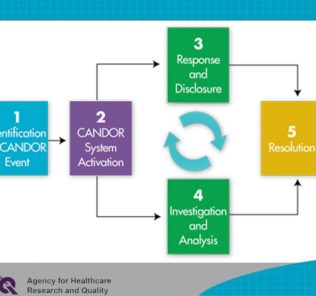Debriefing Guide for Healthcare Simulation Education Escape Rooms
The Agency for Healthcare Research and Quality (AHRQ) and the Department of Defense have identified several essential communication and teamwork skills to promote the provision of quality health care, reduce medical error and improve patient care delivery. They include the identification of roles and responsibilities, team leadership, situational awareness, a shared mental model, and various team-based communication skills. An escape room is a perfect way to encourage these important skills. This HealthySimulation.com article will discuss debriefing an escape room experience utilizing observations of performance to review successes, challenges, and opportunities for improvement.
Identification Of Roles and Responsibilities and Team Leadership
In article three of the three-part series Healthcare Simulation Escape Room Tips & Tricks, the use of QR codes was discussed. The simple task of accessing the QR code clue is inherently challenging for some, depending on their device. For this reason, the team is naturally forced to rely on the strength or skill of one team member or to identify a team leader.
Sponsored Content:
Occasionally, as the available time becomes shorter, and teams are rushing, a team may decide to switch roles if one member begins to have difficulty opening the content. An effective team leader may also identify someone else to take on this role. Alternatively, a team member may self-identify. (Be sure to capture this for debriefing.)
After, effective team leaders may call a modified “huddle” to review a confusing clue. Again, make note if this occurs or should have. Lastly, leaders must note any delegation that occurs. Effective team leaders should delegate rather than take on all of the tasks independently.
During debrief, the facilitator or simulationist should review any examples of effective team leadership as well as areas for improvement. Examples of successful identification of roles and responsibilities should also be brought forward such as the identification of a leader, lock opener, mathematician, or QR code reader for instance. If the team performs this skill especially well, the time to complete the escape will reflect this.
Conversely, if the team did not openly identify a leader and other roles based on team member abilities, fragmented team performance and the lack of clear leadership can be discussed as an area for improvement. The ability to adapt and change roles as needed, and the importance of a team huddle, especially when time is critical (such as during patient care emergencies) are also important to effective teamwork.
Sponsored Content:
In an escape room, this may occur if one team member suddenly has difficulty accessing a QR code clue. The simulationist may view this difficulty as a negative, but in reality, this presents an opportunity for the team to problem-solve and adapt is presented.
The simple act of putting a set of letters or numbers into a combination lock can force team members to identify roles. For instance, one member may be particularly skilled with some lock types but not with others. This is one reason the simulationist may wish to use a variety of lock types rather than having them all similar. Choosing not to orient team members to each lock type can encourage the use of teamwork skills because each lock type will be new and unfamiliar to at least some learners. This is also a reason not to solely use key-type padlocks.
Previous Escape Room Articles:
- Healthcare Simulation Escape Room Tips & Tricks | Part 1
- Healthcare Simulation Escape Room Tips & Tricks | Part 2
- Healthcare Simulation Escape Room Tips & Tricks | Part 3
Situational Awareness and Shared Mental Model
The location of props as well as tools and puzzle boxes should be strategically considered. If a specific tool is needed to decode a clue, such as a mirror or black light, place it conspicuously on top of the clue or puzzle. Commonly an anxious team member will inadvertently set the tool aside without even recognizing that they have.
Then, once the team is struggling to figure out the clue, an observant team member may recall or search for the tool. If not, then precious time may be wasted. This is a perfect example of the importance of situational awareness.
Further, one or two team members tend to stray away and start trying to solve other clues around the room simultaneously, which is why connecting one clue to another is worthwhile. When the team splits, there is no longer a shared mental model and there are fewer members to monitor and ensure mistakes and oversights are not being made.
During debrief, the team must discuss observations made about the effect a shared mental model and the overall situational awareness had on the team’s ability to solve clues and navigate the escape room. Time was inevitably wasted if teams did not pay close attention to the presence of essential tools needed to decipher some of the puzzles.
Communication
An escape room is filled with opportunities to practice communication skills. In groups where the leader or other team members decide to read clues to themselves, rather than out loud, the time to completion is always negatively affected. Not only is the opportunity for error increased but the ability to have a shared mental model is decreased.
Lengthy clues, multistep instructions, and clues requiring complex math especially necessitate multiple members to hear the details. When teams perform this well, they will more quickly navigate the room. If a member reads to themselves or attempts to solve a complex clue independently, essential information is often missed, and errors are made.
Participants must pay attention to when team members call out or check back/read back in order to clarify directions or clues or when they should have done so, especially when solving multistep problems. Occasionally one team member may stand in the background giving critical feedback and information, but they are speaking so softly that they are not being heard. This is a serious area for improvement to note. Effective team communication always involves listening and speaking up.
Final Thoughts On Debriefing
If several teams are completing the escape consecutively, they should post or report the “time to beat” so that members are motivated to work quickly and efficiently. Faculty groups can even participate, and learners will enjoy competing against their own faculty.
The debrief should be done in a large group, with all teams together, so that comparisons can be made between successes and opportunities for improvement. Examples should be reviewed and shared with all teams so that they can learn from each other. Since each team will have solved the same clues and puzzles, they can easily relate to examples, even if the process they used differed slightly.
Teams that completed the escape in the least amount of time, most often used good teamwork and communication skills that others can learn from. Healthcare simulation leaders should always encourage their learners to share observations and thoughts about effective teamwork and communication, as well as areas for improvement.
Clinical Simulation Escape Rooms: Puzzle & Clue Ideas
Disclaimer: Views expressed here are solely those of the author and do not represent those of any employer or organization.
Michelle Sherlin, RN, BSN, CHSE, is the full-time coordinator of the 18-bed simulation lab at the Holyoke Community College Center for Health Education and Simulation. She has patient simulation experience dating back to 2002 when she started healthcare simulation at a vocational school and progressed to implementing simulation activities for several area schools and health care facilities. Her background includes curriculum development at the high school and college levels. Sherlin has hosted patient simulation-related conferences and presented on a multitude of topics. She stays current in nursing practice by working as a staff nurse in the Emergency Department. Sherlin is a per diem educator for the same facility where she conducts patient simulation and teaches Advanced Cardiac Life Support. She also works for a community partnership at another local hospital. In that position, she implements a variety of programs to introduce students to various health care professions. She recently won the “Excellence in Clinical Simulation” award from Education Management Solutions.
Sponsored Content:

















